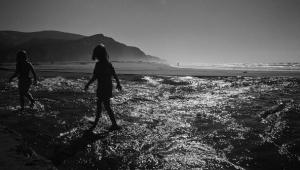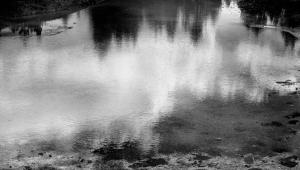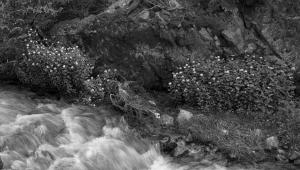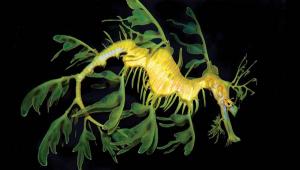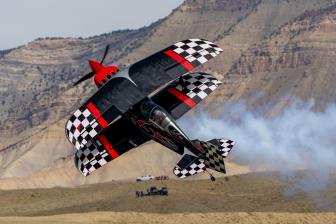Color And Temperature: What Are These Words Doing In The Same Sentence?
Kelvin, like Fahrenheit and Centigrade, is a scale for measuring temperature. Zero degrees Kelvin (this is defined as absolute zero where there is no molecular movement) corresponds to -459.67? Fahrenheit. The relationship between color and Kelvin temperature is derived from heating a “blackbody radiator” (think of this as a piece of black metal) until it glows. The particular color seen at a specific temperature is the color temperature. When the blackbody is hot enough and begins to emit light, it is dull red. This is about 2000? Kelvin and it corresponds to the color we can see in glowing coals in a fire or the red/yellow lava from a volcano (#1). As more and more heat is applied, it glows yellow, and then white, and ultimately blue.
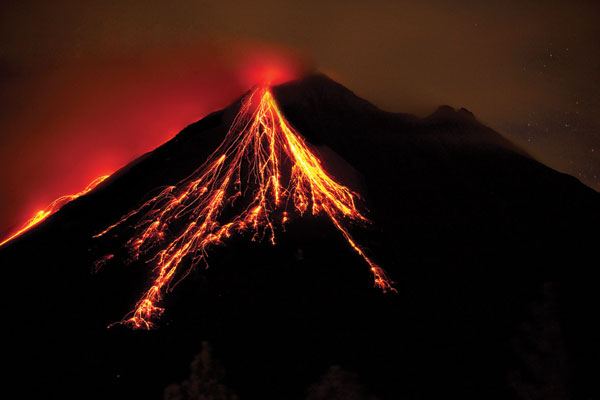
All Photos © 2010, Jim Zuckerman, All Rights Reserved
The colors radiating from the blackbody are correlated to colors we are familiar with in our daily lives. The color emitted from a tungsten lamp in your living room is identical to the yellow-white glow when the blackbody radiator temperature is approximately 3200? Kelvin. When the temperature rises to 5500?, the quality of white light is identical to the color of the sun at midday (#2). The cobalt blue color of twilight just before dark is similar to the color of the blackbody at about 8000? Kelvin.

These numbers are used to understand, for example, how flash effects your images, and may influence your white balance settings. The color of the light emitted by a flash is rated at 5500? by many manufacturers; it is designed to imitate noon daylight (#3). If the flash produces light that is 5800? Kelvin, it has a slight bluish tinge. If it is rated at 5200?, it is slightly warmer, or more yellowish, than white light.

Similarly, film manufactured to give you accurate colors indoors with tungsten illumination is balanced for 3200? Kelvin. Examples include Fujichrome 64T and Ektachrome 50. These films are designed to be used in the yellow-white light of photofloods that are specifically balanced for 3200?.
Since film is not relevant to most of us now, a setting of 5500? Kelvin as the white balance in digital cameras is just like using daylight film. This means that if you shoot indoors with tungsten lights, the pictures will have that yellowish cast just like the interior of the Vienna opera house (#4). I purposely used a daylight white balance to make the scene golden. If I had used 3200? Kelvin for the white balance, the tungsten lights would be reproduced with the correct color balance (#5). Different cameras indicate this white balance in different ways. Some will have an indoors setting while others will show a light bulb icon. More sophisticated camera bodies allow you to dial in 3200? K. These all mean the same thing—that you can expect proper colors when shooting under tungsten lights.
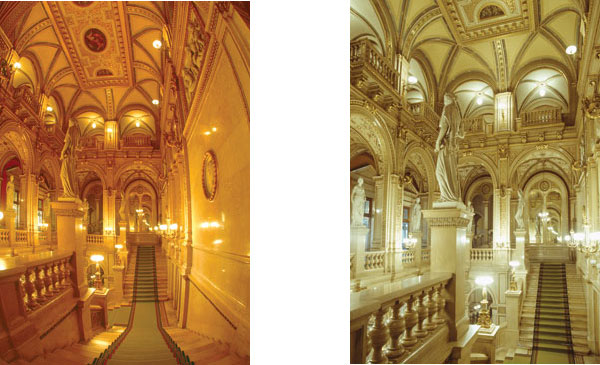
During the middle of the day when cloud cover has obscured the sun, the minute water droplets of the clouds absorb a certain percentage of the red and yellow wavelengths of light. The colder end of the spectrum, the bluish wavelengths, pass through unimpeded. As a result, landscapes and outdoor portraits will have a slight bluish cast even during midday. This also happens in thick fog (#6). In deep overcast, the blue color becomes more pronounced as it did in (#7). This is a tree stump that had been buried by a glacier for thousands of years, and in dark conditions under a thick cloud cover it went an intense blue/cyan when using a daylight film (this was taken in the 90s). If the cool tonality is unappealing to you, set the white balance to cloudy. However, if you like blue tonality in your shots, by photographing at dawn or twilight, the color can get quite intense. I photographed a foggy forest in Italy at 6 o’clock in the morning (#8) on a daylight white balance. Look how blue it is.



In digital photography you can tweak the color temperature in Photoshop to a certain degree, but it’s much easier to work on color temperature issues in Adobe Camera Raw or Lightroom because you have so much control. That’s one reason why it’s so important to shoot in Raw mode.
Many photographers use their cameras on Auto White Balance all the time. I feel this is a mistake especially when shooting outdoors. AWB wants to convert the golden light of sunrise or sunset into white light, and this is not what you want. In fact, it really destroys the beauty of what you’re trying to capture. I would strongly encourage you to take your camera off Auto White Balance and use instead Daylight WB or 5500? K. I leave my camera on this setting for everything I shoot except when I am photographing indoors and using tungsten lighting (and then I use a Tungsten White Balance setting) or when I’m shooting fluorescent lights (and then I use AWB). If you take comparison shots between shooting at sunset with a Daylight White Balance setting and photographing with an Auto White Balance setting, you will immediately see the difference. I think you will agree with me that the Daylight WB setting is much better.
If you shoot in Raw mode, you can tweak the color temperature in Adobe Camera Raw or Lightroom. However, if you shoot in JPEG mode, you cannot effectively alter the color temperature as you might want to do it. Personally, I prefer to not depend on manipulating color temperature in ACR because I like to see the rich, saturated golden colors of sunrise or sunset as soon as I open the images on my computer.
- Log in or register to post comments


